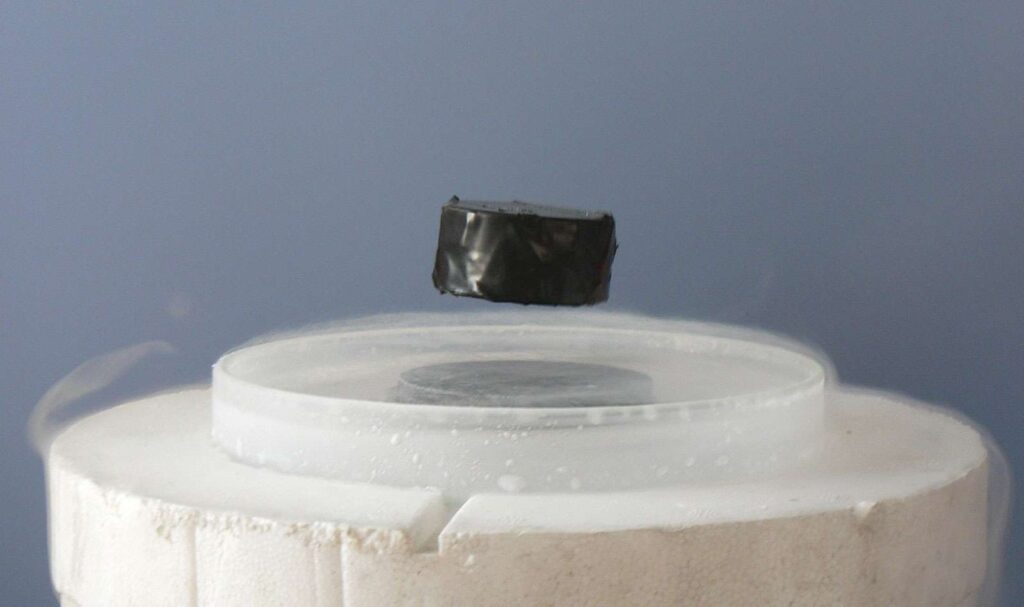The Meissner effect is an expulsion of a magnetic field from a superconductor during its transition to the superconducting state. T he German physicists Walther Meissner and Robert Ochsenfeld discovered the phenomenon in 1933 by measuring the magnetic field distribution outsidesuperconducting tin and lead samples.

The interior of a bulk superconductor cannot be penetrated by a weak magnetic field, a phenomenon known as the Meissner effect. When the applied magnetic field becomes too large, superconductivity breaks down. Superconductors can be divided into two types according to how thisbreakdown occurs. In type-I superconductors, superconductivity is abruptly destroyed via a first order phase transition when the strength of the applied field rises above a critical value Hc. Type-II superconductor is characterized by the formation of magnetic vortices in an applied magnetic field. This occurs above a certain critical field strength Hc1. The vortex density increases with increasing field strength. At a higher critical field Hc2, superconductivity is completely destroyed.



